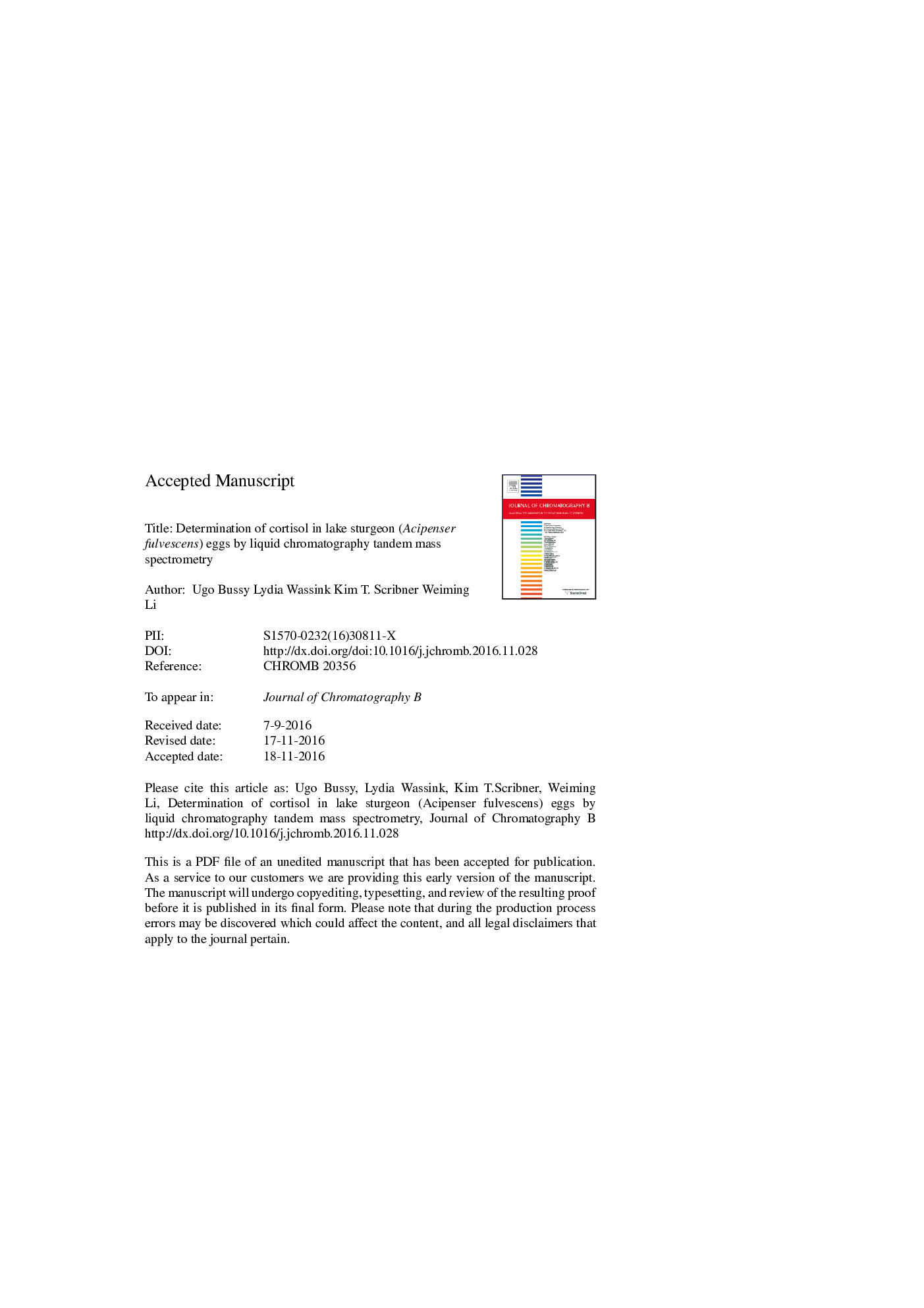| Article ID | Journal | Published Year | Pages | File Type |
|---|---|---|---|---|
| 5136580 | Journal of Chromatography B | 2017 | 23 Pages |
Abstract
Quantifying cortisol concentrations in fish eggs is important to understand the effects of environmental conditions on maternal physiological condition and on egg provisioning and quality. Data are particularly relevant to studies of the ecology of threatened species such as lake sturgeon (Aciperser fulvescens) as well as assessments of larval physical and behavioral phenotypes, fish health and caviar quality in sturgeon aquaculture. This study focuses on development of bioanalytical methods for high sensitivity and robust determination of cortisol in sturgeon eggs. Sample preparation was optimized after investigating protein precipitation and liquid-liquid extraction techniques. Ethyl acetate was found to be the most efficient solvent (recovery parameter) and also provided the best sample clean up (matrix effect parameter). The method was determined to be linear for cortisol concentrations between 0.025 and 100Â ng/mL. The limits of detection and quantification were 0.025 and 0.1Â ng/mL respectively. Intra- and inter-day performances of the method were validated at three concentrations (0.25; 10 and 100Â ng/mL). The method was applied to field-collected samples for the determination of endogenous cortisol in lake sturgeon eggs. Cortisol was detected in all egg samples and statistical analysis showed significant differences between fertilized and non-fertilized eggs.
Related Topics
Physical Sciences and Engineering
Chemistry
Analytical Chemistry
Authors
Ugo Bussy, Lydia Wassink, Kim T. Scribner, Weiming Li,
